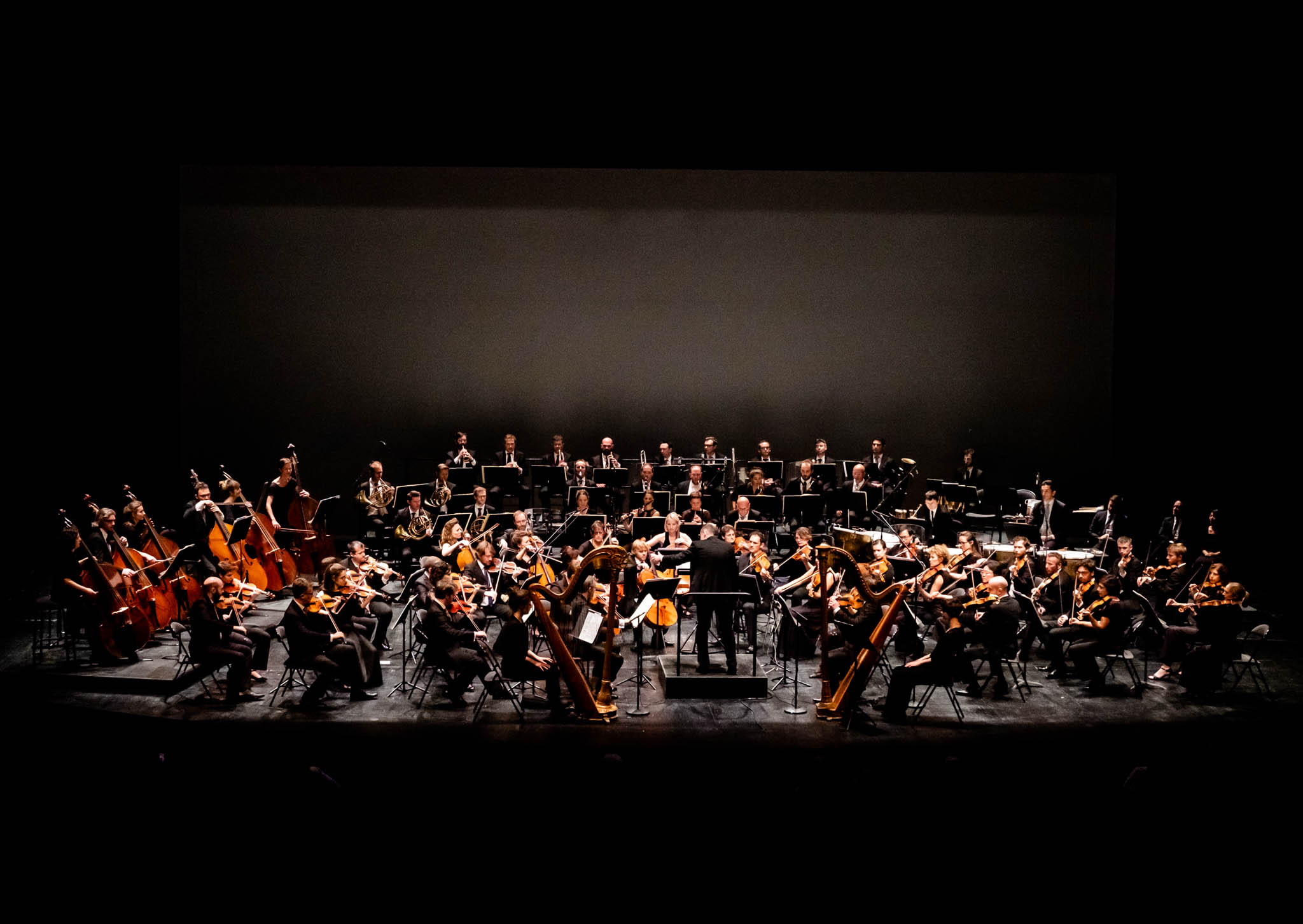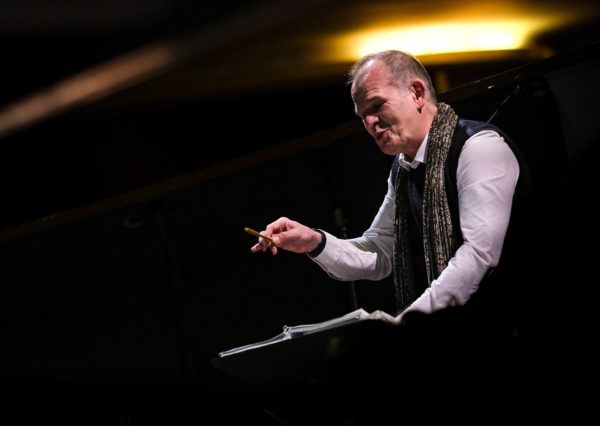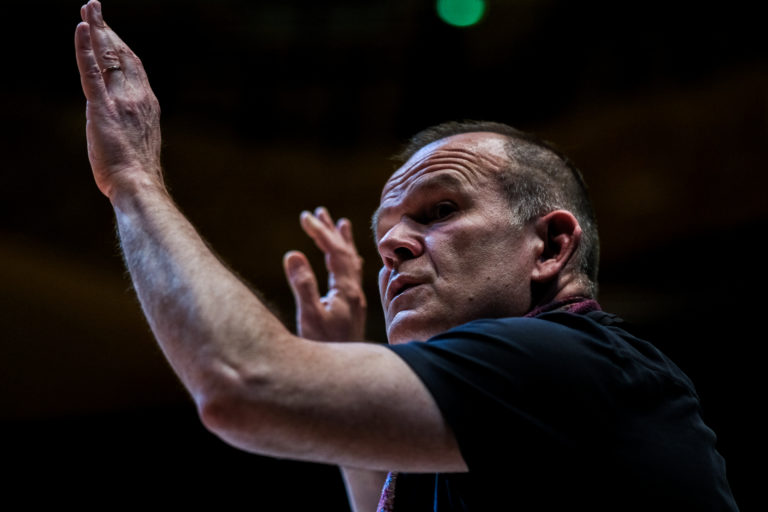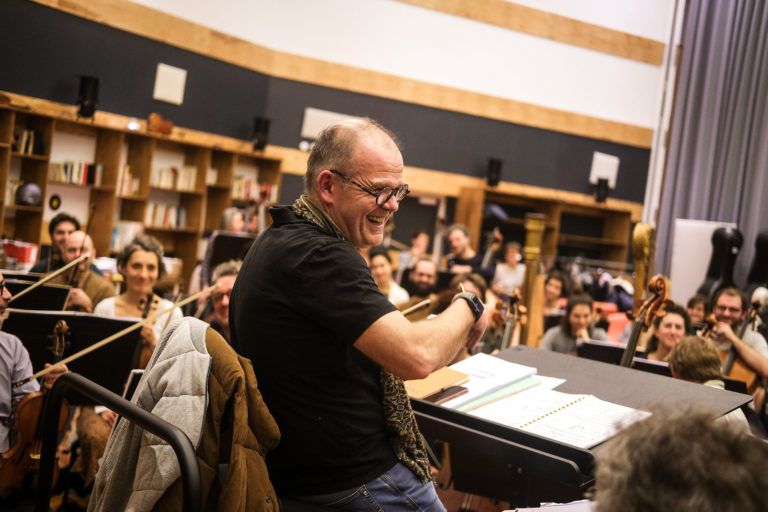Les Siècles orchestra
& the Ballets Russes

& the Ballets russes
Les Siècles
Les Siècles' Project
Founded in 2003 by François-Xavier Roth, the Les Siècles orchestra is a unique group of musicians from a new generation, playing each repertoire on the appropriate historical instruments. In this way, Les Siècles puts several centuries of musical creation into perspective in a relevant and unexpected way.
Part of Les Siècles 2023 season celebrates Stravinsky’s three ballets (The Firebird, Petrushka and The Rite of Spring). In 2022, the orchestra achieved the feat of performing these three masterpieces in their complete versions in a single evening (at the Cologne Philharmonic in Germany, then in Valenciennes and finally at the Théâtre des Champs Elysées on 30 September 2022). This is the culmination of a long-term project led by F.-X. Roth and the Les Siècles team, inextricably linked to the orchestra’s history, since the early 2010s.
François-Xavier Roth's Reflexions

François-Xavier Roth's
Reflexions
Reflections by François-Xavier Roth collected by Guillaume Tion and published with the CD “Ballets russes”, Harmonia Mundi (HMX2905342.43). Translation: Charles Johnston.
A seminal Shock
What did you find out through working on the Ballets Russes?
François-Xavier Roth – When we started our research, I was fascinated by the way the programmes were organised. I was familiar with the major premieres, but I knew much less about the complete programmes of the seasons. I had a preconceived notion that they just consisted of a string of new works. But no. There was an enormous amount of Russian, French and German music: Diaghilev compiled works from different repertories to create ballet cycles. What I thought was a succession of premieres was in fact a celebration of dance through very contrasting musical styles, with a celebration of Russian art, as it were a cycle of concerts that bridged the gap between the nineteenth century and the avant-garde of the early twentieth.
What influence did these works have on Les Siècles?
F-X Roth – It was a seminal shock. I still remember vividly the first play-through of The Firebird: we were all captivated by the phenomenon of hearing the orchestration on period instruments. The low gut strings blended with the French bassoons of 1900 and produced a crepuscular atmosphere. We had the impression we were rediscovering a sound world, a pungency, a natural conjunction of timbres that functioned perfectly together. The colour of the work changed completely.
In what respect do these works from around 1910 retain a certain modernity?
There aren’t very many works of which it can be said that, after their first performance, one knows that something has happened, that there is a ‘before’ and an ‘after’. Musicians and audience have changed during the concert. The Rite is one of those. It’s a phenomenon, almost physical, biological. Just like Beethoven’s Missa solemnis, or Wagner’s Tristan… The first two ballets, The Firebird and Petrushka, are luxuriant, inventive works. The three ballets can be seen as a decisive turning point, a new direction taken by music at the beginning of the twentieth century, a meteoric trajectory that was to change the course of history. In the view of all intellectual and musical circles, he was the supreme composer. The twentieth century is the century of Stravinsky. Thanks to these three works. In such a short space of time, he managed to impose once and for all a signature that became a cultural reference point for decades. And it’s all the more true because poor Stravinsky never stopped trying to prove that he was much more than the composer of these three works. It was a tragedy for him, and it stuck to him like glue, like chewing gum: he remained the composer of the ballets, of The Rite, of these works that have marked us, all of us, for ever.

Photo: Cyprien Tollet ©.
There is also the question of the version of The Rite…
It all started with a conversation with Pierre Boulez in 2010-11. In the last part of the Sacrificial Dance, he had the strings play pizzicato whereas they were marked arco on my score. Why did he do that? Boulez explained to me that there were a number of versions prior to the final one, in which Stravinsky had made changes over the years. He gave me the name of a Quebec musicologist who had spent his life studying The Rite, Monsieur Cyr. He sent us microfilms, the first score used by Pierre Monteux and other things too.
This score is a detective story. It was premiered in 1913, on the eve of the war, but wasn’t published at the time: Stravinsky provoked a revolution within the orchestra, the musicians were against him, they couldn’t play it, he even hired bodyguards… The work was nonetheless a great success, and the parts circulated with corrections made by Stravinsky or other conductors to smooth out complicated passages. It was such a mess for so many years that his new publisher asked him for a definitive version, which didn’t come until 1947. After years of experimentation, he tried to simplify his musical content, to make it more efficient in terms of corrections. For example, at the beginning of the Sacrificial Dance, there’s a marking for each note: arco, pizzi, ponticello, ordinario for four notes; but in the final version, they’re all arco with normal position. He realised that he couldn’t manage to get musicians to absorb so much innovation and so many feats of instrumental prowess within a limited time.
So in 2013 we were allowed to perform the reconstruction of the original version. Technically, the orchestra came out of it very well. Today’s musicians are perfectly familiar with the notion of compound metres, with 3/16, then 2/16, and so on; it isn’t a problem for them, they’ve assimilated it. For the instrumentalists of the time it was a completely different story! For my part, I see this as time working to our advantage and enabling us to fulfil the wishes of the young Stravinsky.
Towards new collective virtuosity
In the collective imagination, Stravinsky means the twentieth century: so why go looking for period instruments?
Yes, one has the impression that Stravinsky belongs to the glittering sound of modern orchestras. On period instruments, you discover a different kind of music, with new ears. Gut strings and small-bore brass instruments will never be able to compete with modern instruments in volume, but in terms of the diction of the music and its colour, one realises what he was trying to express at the time. There are tremors of fear, muted, threatening, but there’s also violence: sometimes the orchestra howls, pushed to its very limits. One comes to understand Stravinsky’s compositional gesture. For the instrumentalists, it’s anything but the feeling they can get on modern instruments, that is to say, the cushioned comfort of playing. Today’s bassoonists can play the opening of The Rite very easily. At the time, there was no key to facilitate access to the upper register. It has in effect been added since The Rite.
Is it possible to speak of a specifically French sound?
Once he had arrived in Paris and been propelled to star status overnight with The Firebird, Stravinsky benefited from the best orchestras in Europe: the Orchestre de l’Opéra, the Société des Concerts du Conservatoire… all these ensembles vied with each other in collective brilliance. Already Wagner used to say that Paris was the city where Beethoven’s symphonies were heard to best advantage. Stravinsky was also faced with instruments that he hadn’t known in Russia: French-made woodwind, brass instruments, harps…
What did Stravinsky contribute?
An adventurous approach going to the limits of what the instruments of the time could do. But also the way he lays out the orchestral forces, when he makes a horn section roar, for example. In the first scene of Petrushka, in the Sacrificial Dance of The Rite, Stravinsky has the orchestra play as a whole, in rhythmic patterns never heard before. He invents a new collective virtuosity; no other composer would have dared do what he did.

